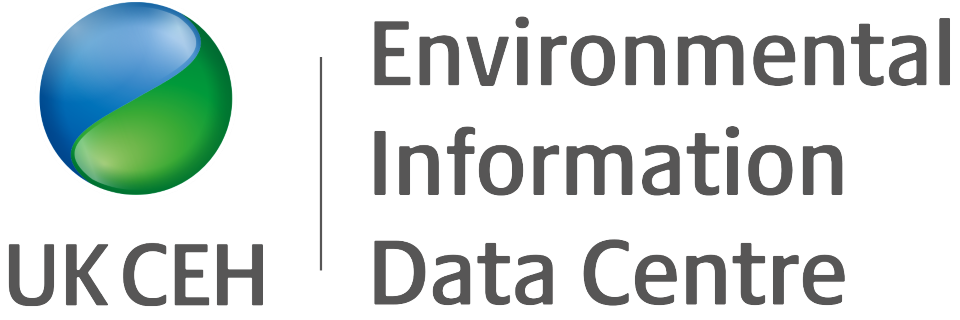
These data are held and managed by the Environmental Information Data Centre
For more details and to access the data, go to https://catalogue.ceh.ac.uk/id/40ba6fd0-3d41-4520-8d78-cc8c893fd974
For more details and to access the data, go to https://catalogue.ceh.ac.uk/id/40ba6fd0-3d41-4520-8d78-cc8c893fd974
Leach, D.; Meharg, A.; Wright, J.; Bachiller-Jareno, N.; Tindall, I.; Moore, R.
Polychlorinated biphenyls (PCB), chlorobenzenes (CB) and organochlorine pesticides (OC) data from rivers [LOIS]
https://doi.org/10.5285/40ba6fd0-3d41-4520-8d78-cc8c893fd974
Cite this dataset as:
Leach, D.; Meharg, A.; Wright, J.; Bachiller-Jareno, N.; Tindall, I.; Moore, R. (2013). Polychlorinated biphenyls (PCB), chlorobenzenes (CB) and organochlorine pesticides (OC) data from rivers [LOIS]. NERC Environmental Information Data Centre. https://doi.org/10.5285/40ba6fd0-3d41-4520-8d78-cc8c893fd974
Download/Access
PLEASE NOTE:
By accessing or using this dataset, you agree to the terms of the relevant licence agreement(s). You will ensure that this dataset is cited in any publication that describes research in which the data have been used.
© UK Centre for Ecology & Hydrology
This dataset is made available under the terms of the Open Government Licence 
Polychlorinated biphenyls (PCB), chlorobenzenes (CB) and organochlorine pesticides (OC) data from river water collected at various sites within the Humber catchment area as part of the Land Ocean Interaction Study project (LOIS). Data were collected at regular weekly intervals and intermittently during periods of high flows. All sites were samples from early 1994 to the end of 1996 except for O12, which was sampled from November 1994 till November 1996. The sampling was carried out by the LOIS team at York University. The unfiltered samples were transported to the Institute of Terrestrial Ecology, Monks Wood, UK, where they were extracted with hexane, cleaned up by alumina column chromatography, concentrated and then analysed for CBs by Gas Chromatography-Mass Spectrometry (GC-MS) and PCBs and OCs by Gas Chromatography with Electron Capture Detection (GC-ECD).
Publication date: 2013-07-01
Format
Comma-separated values (CSV)
Spatial information
Study area
Spatial representation type
Tabular (text)
Spatial reference system
OSGB 1936 / British National Grid
Temporal information
Temporal extent
1993-09-07 to 1997-10-29
Provenance & quality
Prior to analysis the samples were stored in the dark at 4 degreesC. The sample (500ml) was transferred to a volumetric flask and extracted with 5 x 10ml aliquots of hexane. The hexane extract was transferred to a to a Kuderna-danish flask via a funnel containing anhydrous sodium sulphate and reduced to approx. 1.5ml at 80 degreesC. The extract was adjusted to exactly 1.0ml under a stream of nitrogen. The whole of the reduced extract was cleaned up on a glass column containing 0.8g of alumina deactivated with 5% water. The cleaned up extract was then reduced to 0.5ml under a stream of nitrogen. An internal standard was added (Dichlobenyl) and each extract split equally into two chromatography vials. Chlorobenzenes were analysed by GC-MS in select ion mode. Organochlorine pesticides and PCB congeners were analysed by GC-ECD. A spiked recovery and a sample blank were included with each batch of samples. The results were not corrected for recovery losses. Limits of detection were defined as the concentration of analyte that gives a signal twice that of the baseline noise. Blank sample bottles were taken into the field during sample collection and opened and closed on site. The blank bottles were extracted with 5 x 10ml of hexane and the hexane extracts analysed by the procedure used for the samples. Spiked recovery samples (hexane washed HPLC grade water, containing 0.5g of clean clay particles, spiked with all the analytes) were included in each batch. OCs and PCBs were identified by relative retention time. CBs were identified by relative retention time and ion ratios (3 ions). Calibration was by the internal standard method. A zip file of box-and-whisker plots for each determinand is available, showing the range of values (median, inter-quartile range, 1.5 * inter-quartile range, outliers) recorded at each site to enable prospective users to understand data quality.
Licensing and constraints
This dataset is made available under the terms of the Open Government Licence 
Cite this dataset as:
Leach, D.; Meharg, A.; Wright, J.; Bachiller-Jareno, N.; Tindall, I.; Moore, R. (2013). Polychlorinated biphenyls (PCB), chlorobenzenes (CB) and organochlorine pesticides (OC) data from rivers [LOIS]. NERC Environmental Information Data Centre. https://doi.org/10.5285/40ba6fd0-3d41-4520-8d78-cc8c893fd974
© UK Centre for Ecology & Hydrology
Correspondence/contact details
Fry, M.
UK Centre for Ecology & Hydrology
Maclean Building, Benson Lane, Crowmarsh Gifford
Wallingford
Oxfordshire
OX10 8BB
UNITED KINGDOM
enquiries@ceh.ac.uk
Wallingford
Oxfordshire
OX10 8BB
UNITED KINGDOM
Authors
Leach, D.
University of York
Meharg, A.
Centre for Ecology & Hydrology
Wright, J.
Centre for Ecology & Hydrology
Bachiller-Jareno, N.
Centre for Ecology & Hydrology
Tindall, I.
Centre for Ecology & Hydrology
Moore, R.
Centre for Ecology & Hydrology
Other contacts
Rights holder
UK Centre for Ecology & Hydrology
Custodian
NERC EDS Environmental Information Data Centre
info@eidc.ac.uk
Publisher
NERC Environmental Information Data Centre
info@eidc.ac.uk
Additional metadata
Keywords
, Aire , Calder , Catchment , Chlorobenzene , DDE , DDT , Derwent , Dichlorobenzene , Dieldrin , Ecological Processes & Resilience , England , Hexachloro-1-3-butadiene , Hexachlorobenzene , Humber , Land Ocean Interaction Study , LOIS , Nidd , Ouse , PCB , Pentachlorobenzene , Pollution , Rees Section , Sustainable Land Management , Swale , TDE , Tetrachlorobenzene , Time Series , Trent , Trichlorobenzene , water quality , Water Quality , Water Resources
Last updated
21 March 2025 13:36
